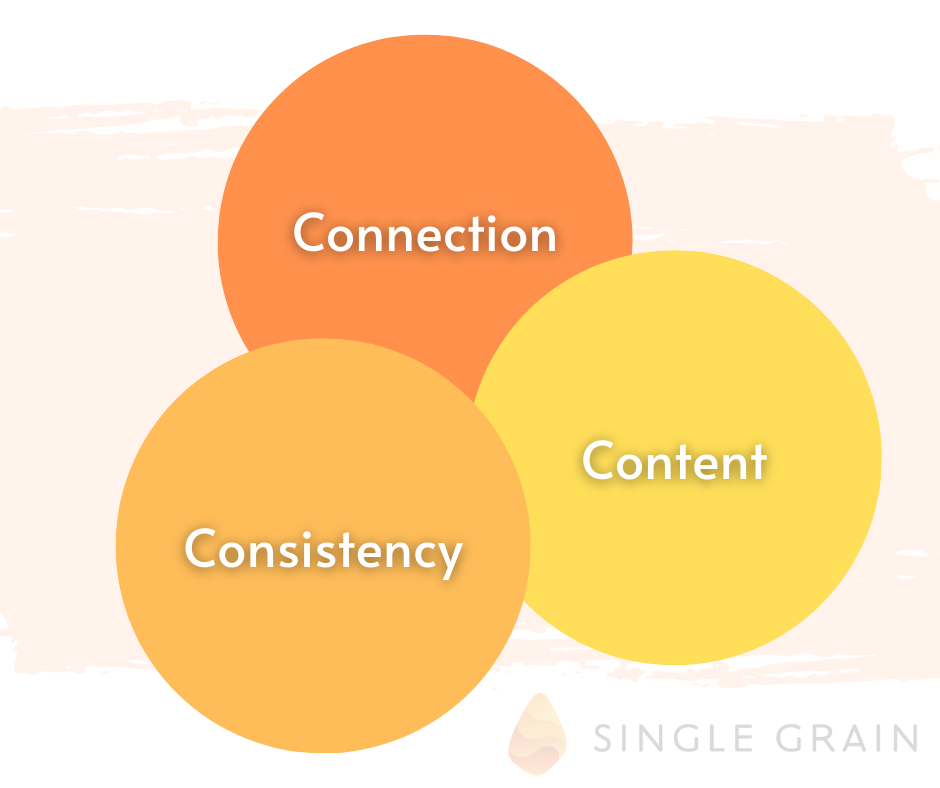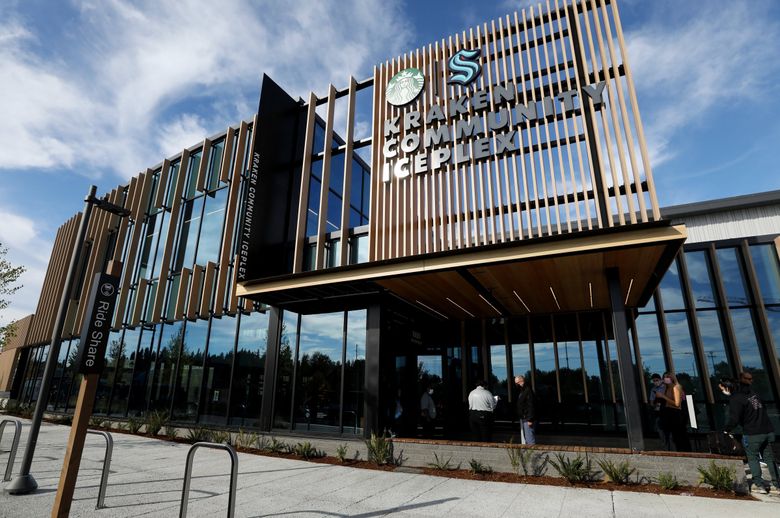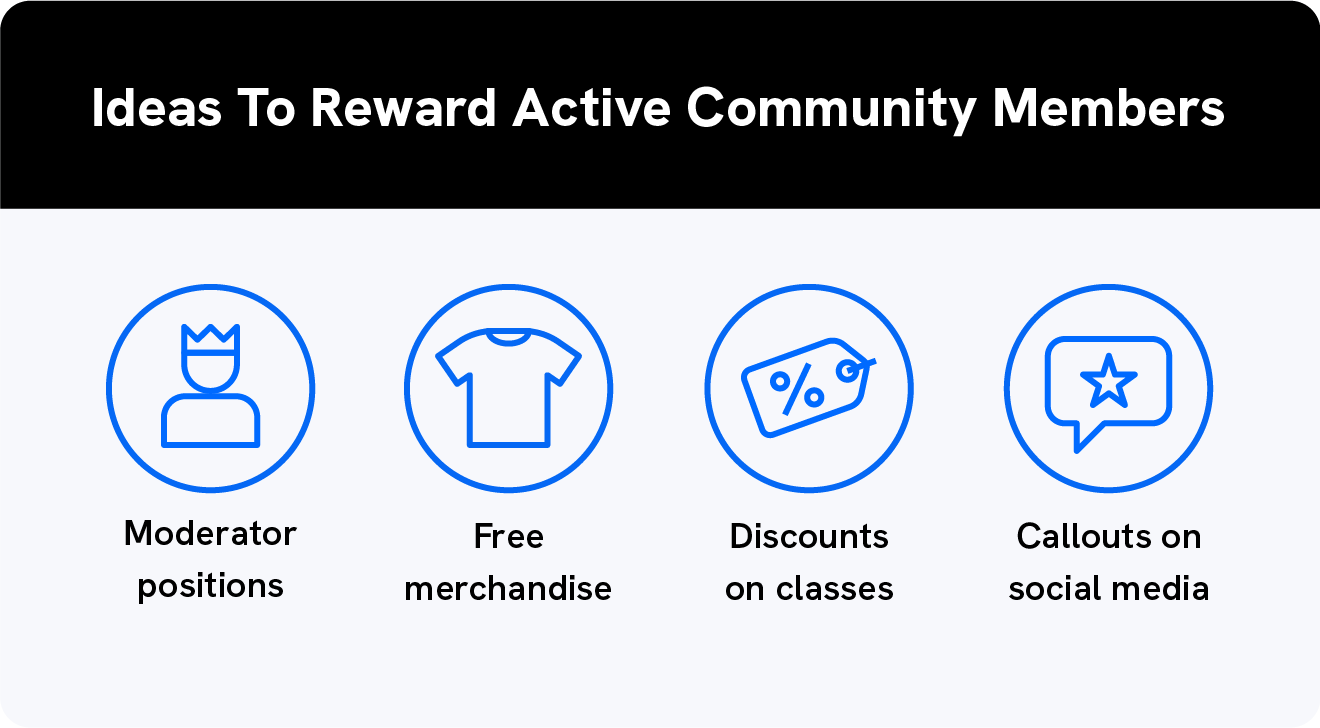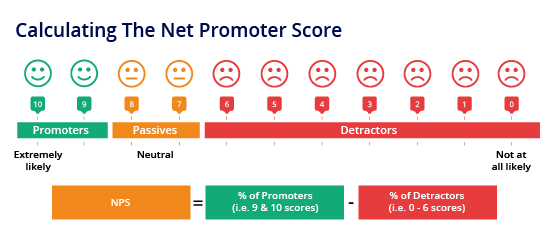Part of building brand presence involves cultivating a following that cares deeply and passionately about your business, what it stands for, and what it provides to others.
Engaging with your brand’s community is one of the most direct and organic methods of building brand equity in your market space.
For this blog post, we will cover the most helpful tips on how to get started with community marketing. We’ll cover strategies that focus on building relationships with customers, as well as how to encourage your brand followers to share your brand’s messaging with their own network.
Key Highlights
- Community marketing is about building long-term relationships and trust with customers, not immediate sales.
- Successful community marketing is about understanding your audience, creating engagement opportunities and an inclusive culture to increase loyalty.
- Measuring community marketing success through clear goals, engagement metrics and adaptable strategies is key to increasing brand loyalty and customer engagement.
What is Community Marketing?
A community-based marketing strategy involves engaging and nurturing a group of people who are connected to a product or brand through interest or purpose.
This type of engagement-focused marketing prioritizes sustained audience interactions over immediate sales, building customer loyalty through real connections and conversations that build trust and support for the brand.
At its heart, it’s about putting customers first and being genuine in your engagement to provide real value.
Community marketing moves away from aggressive advertising tactics to a model where interaction and communal experiences are the building blocks for cultivating brand loyalty. Understanding what makes this type of community-based strategy different is key to creating a strategy for long-term customer relationships.
Key takeaway:
Laying the Groundwork
Building and nurturing communities is how brands get to know their audiences better. Trust is the foundation of community engagement and leads to increased customer loyalty. Engaging with your community builds real relationships and a network of support and idea exchange.
Community marketing is about creating meaningful connections, building trust and encouraging advocacy within a specific community rather than promoting products or services through traditional advertising. This allows brands to build a loyal customer base that feels personally connected to the brand’s values and purpose.

When community members feel part of the community they are more likely to become brand advocates, sharing their positive experiences with others. This is especially true in brand communities.
Engaging with your community members is not just about interaction. It’s also about creating a sense of belonging and shared purpose as if they have a role to play in bringing your brand to others. Focusing on the customer journey and providing a good experience helps brands build awareness and loyalty through word of mouth and organic community growth.
The 3 C’s of Community Marketing
The three C’s of community marketing—Connection, Content, and Consistency—are essential for building a successful and loyal community around your brand.

1. Connection
- Build Relationships: Foster genuine relationships with community members to create a sense of belonging.
- Engage Regularly: Interact with your community through various platforms to maintain an active presence.
- Listen Actively: Pay attention to feedback and insights from the community to address their needs and concerns.
2. Content
- Value-Driven Content: Provide content that offers real value to your community members, such as tutorials, tips, and exclusive information.
- Interactive Elements: Incorporate interactive content like polls, Q&A sessions, and live events to keep the community engaged.
- User-Generated Content: Encourage community members to share their own stories, experiences, and content related to your brand.
3. Consistency
- Regular Updates: Keep your community informed with regular updates about your brand, products, and activities.
- Consistent Engagement: Maintain a steady presence in the community to build trust and reliability.
- Sustained Efforts: Ensure that community marketing efforts are ongoing and not just one-off campaigns to build long-term loyalty.
Key takeaway:
It’s Different from Traditional Marketing
Community marketing strategies prioritize long-term connections over immediate sales, which is different from traditional transactional marketing.
A defining principle of this strategy is to build deep and meaningful relationships within the community, which in turn builds trust and loyalty. Unlike advertising-dependent marketing, community marketing is about regular engagement and interaction on community-centric platforms.
Key elements of community marketing include:
- Prioritizing Long-Term Connections: Focusing on sustained relationships rather than immediate sales ensures a loyal customer base.
- Building Trust and Loyalty: Brands can strengthen trust and loyalty within their communities by fostering deep and meaningful interactions.
- Regular Engagement: Unlike traditional marketing, community marketing involves continuous interaction with the community on relevant platforms.
- Customer Engagement: Engaging with customers on a personal level encourages them to become brand advocates through word of mouth.
- Sustainable and Effective Approach: This strategy aligns with modern consumer behavior and expectations, offering a more sustainable and effective marketing method.
If you focus on customer engagement and building real relationships, you will create a customer base that becomes brand advocates through word of mouth.
This not only improves the overall customer experience but also provides a more sustainable and effective marketing approach—one that aligns with current consumer behavior and modern expectations of what marketing should be!
Key takeaway:
Planning Your Community Marketing Strategy
Building an online community helps to build relationships with people who share common interests and increases customer loyalty by getting feedback on products. The foundation of a successful community marketing strategy is to know your customer base, understand their preferences and create opportunities for sustained engagement.
For the community to thrive, you need to weave community-focused activities into the business strategy and regularly ask for input that resonates with what the members want. To do this, you need to combine digital and physical interaction to create a unified customer experience.
Key takeaway:
1) Determine Your Target Community
Researching the interests and pain points of your community members helps to target your marketing. Creating a welcoming environment is key to making all members feel included and valued. Defining specific goals helps marketers align their community initiatives with overall business objectives. Knowing your audience’s interests and common goals is key in community marketing as it helps to build deeper connections.
For example, Starbucks promised its community they would have over 1,000 Community Stores by 2030 to increase local engagement and outreach. This shows the importance of knowing your audience and creating a space where potential customers feel connected and valued. It also demonstrates how in tune your brand is with its community.

Focusing on building real relationships in your community marketing strategy means finding common ground with your audience and expressing it with them.
Key takeaway:
2) Create Engagement Opportunities
Adding interactive elements like contests and live events can increase engagement in a community. Keeping members engaged through webinars, live Q&As, and workshops is a good strategy. Offering in-depth content like online courses, tutorials, and video series can deepen community involvement.
To effectively engage your community, consider the following strategies:
- Events: Host interactive events like webinars, live Q&As, and workshops to provide valuable information and hands-on learning experiences.
- Supportive Material: Offer in-depth content such as online courses, tutorials, and video series to keep members engaged and involved.
- Feedback: Run regular polls and surveys to gather insights and feedback from your community, creating a responsive environment driven by members’ input.
Building relationships among community members builds real relationships within that space. Icebreaker exercises, theme discussions, and question channels encourage networking among the group members.
When you create channels focused on specific interests within your larger community, you allow those engaged to talk about the same topic, which drives engagement from different parts of your membership base.
[sg_alert type=warning]Key takeaway: Interactive elements like contests, live events, and in-depth content keep the community engaged. Regular polls and surveys gather valuable insights, making the community feel responsive and inclusive.
3) Build a Culture
as we touched on earlier, building a sense of belonging among community members is crucial. You want to draw them near to your brand and make them feel like an active part of it (because they are).
Try out these strategies to nurture a stronger community culture:
- Create “Third Places”: Establish warm and welcoming spaces where community members can come together and connect. These are generally referred to as “third places” for being outside of the home or workplace. These could be spaces like Discord or Slack for anybody to chime in with comments, feedback, or positive testimonies on their experience with your brand.
- Maintain Open Communication: Build trust by keeping everyone informed about what’s happening and the impact of their involvement.
- Be Responsive: Show responsiveness to deepen loyalty and make members feel included. The brand Patagonia exhibits this a lot through its transparency about its sustainability activism efforts.

- Partner with Local Entities: Deepen relationships within the community and ensure business strategies meet local needs by collaborating with local entities.
- Incorporate Gamification: Turn member engagement into fun experiences that drive active involvement.
Key takeaway:
Community Engagement Strategies
Community marketing is different from traditional marketing because it prioritizes communication and collaboration with customers. Brands can strengthen customer relationships and show they care by interacting with their audience on social media.
Measuring community marketing should be based on key metrics like community growth, engagement and brand loyalty.
1) User Generated Content
Creating a supportive environment in the community can encourage members to share their insights and increase engagement overall. Similarly, creating dedicated discussion forums can encourage community members to share their stories.
As mentioned above, running regular surveys and interactive content is a good way to keep members active in the community.
Encouraging user-generated content gives brands the tools for word-of-mouth marketing and a treasure trove of real and interesting content.

When users share their own content, it does more than provide personalized recommendations and perspectives. It builds a sense of ownership and belonging among the community members.
Using this tactic can revitalize engagement and create a customer base that is not only loyal but also embedded in the community – become contributors that grow that very same group through word of mouth.
2) Member Networking
Themed discussions can increase networking and spark more interesting conversations in the community.
Starbucks, for example, uses community events to connect with customers and strengthen their loyalty to the brand.
Patagonia engages with its audience by informing and educating its community on constructive initiatives they care about. They then spur similar interest in their community to act through local environmental campaigns.
Connecting community members is key to building strong relationships and loyalty to the brand. Getting a community member to engage with others who have similar interests helps brands create a dynamic and supportive environment. This increases engagement and makes members feel seen and connected in the community.
3) Recognizing and Rewarding Your Community
Recognizing community members is key to keeping them excited and active in the community. Show appreciation through different means like public shout-outs, badges or alternative recognition methods. These can be for different milestones, like interaction with content on the platform.
We touched on this above, but again, this is where gamification can add a layer of fun to community involvement and get members to interact more. Asking for feedback and engagement shows members that their contributions are valued, and It shows community managers that they care.

By valuing their input and giving them tangible recognition for it brands can create a loyal customer base. So customers feel seen and inspired to keep connected with the brand.
Social Media
Using social media as a tool amplifies community marketing’s ability to raise awareness and get people involved. Using technology and social media platforms in community marketing allows for real-time interaction with customers. These social media communities are essential for brands that want to increase their presence and connect deeper with their audience.
By using social media platforms effectively brands can supercharge their community marketing and build relationships with the community members.
Selecting the Right Platform
Selecting the right social media platform is key to executing a community marketing strategy and building a brand community. The platform must match what your audience prefers and support the type of content you want to publish for maximum engagement.
Make sure your choice helps you achieve your marketing goals by connecting with and talking to your target market in the community.
Social Media Engagement Best Practices
To effectively engage with your community on social media:
- Engage Regularly: Interact with community members frequently to create a warm and inclusive environment.
- Develop Your Audience: Understand that building relationships and developing your audience is a long-term process.
- Maintain a Strong Presence: Be active on key platforms like Twitter, LinkedIn, and Facebook to ensure community involvement.
- Use Clear Calls to Action: Increase engagement by directing users to specific actions through clear calls to action in your social media posts.
- Respond to Comments and Mentions: Foster more dialogue and participation by consistently responding to comments and mentions.
When brands do this consistently, they make sure their social efforts support their overall marketing strategy to build brand awareness and relationships with community members.
Measuring Your Community Marketing
Monitoring and measuring community marketing is key for brands to understand the impact and adjust as needed. Keep an eye on these programs and they will be working with the community.
When you set measurable targets for your community engagement, you can get a better idea as to how your engagement is working and, just as importantly, where you need to improve. Knowing your key metrics allows you to iterate and improve your community engagement techniques and set yourself up for greater success.
Set Clear Goals
Gaining insight from customers is crucial for finding opportunities to grow the business and improve products or services. Through community members, businesses can understand their customers’ challenges and needs, leading to more focused goals.
- Set KPIs: Establish key performance indicators (KPIs) to measure progress and adjust marketing strategies based on customer feedback.
- Align Goals: Ensure your community marketing goals align with your overall brand objectives.
- Measure Success: Use clear goals and metrics to evaluate your marketing strategy within the community, enabling informed decisions to increase customer engagement.
Engagement Tracking
Key indicators of engagement in a community are not just how often members post or attend events but also the level of interaction.
The level of love community members have for a brand is often shown in positive comments and the amount of content they create themselves to build brand advocacy. How well these efforts work can be measured by metrics like reach, impressions and audience growth.
Try Using the Net Promoter Score Tracking Method
Net Promoter Score (NPS) is a valuable metric for measuring customer loyalty and satisfaction within your community. It can be super handy in gauging the overall temperament of your collective community.

Here’s how it works:
- Simple Survey: NPS involves asking community members a simple question: “On a scale of 0-10, how likely are you to recommend our brand to a friend or colleague?”
- Categorize Responses: Based on their scores, respondents are categorized as Promoters (9-10), Passives (7-8), or Detractors (0-6).
- Calculate NPS: Subtract the percentage of Detractors from the percentage of Promoters to get your NPS.
- Actionable Insights: Use NPS to gain actionable insights into customer loyalty and identify areas for improvement.
For brands to adjust their marketing tactics correctly, they need to monitor how well their tactics are working with their audience and what returns on investment those engagements are bringing.
Key takeaway:
How to Grow a Community for the Long Term
Growing and strengthening a community requires continuous development. A community’s longevity is all about the consistent execution of strategies that engage with its members.
By engaging consistently and being open to the changing needs of the community you can ensure growth and a buzz in the community.
Continuous Engagement Strategies
Providing content that sparks conversation and hosting events for the community can keep engagement thriving. Keeping the content and activity in the community fresh keeps members interested and active.
Events get members interacting directly with each other which strengthens their feeling of belonging in the group. A community marketing strategy must continually engage its members to keep them interested and loyal.
Combining content with communal gatherings creates a buzz in the community. This ensures members are engaged and participating and builds connections with them and loyalty.
Listening to the Community
Listening to what members say is key to adjusting marketing strategies to meet their changing expectations. In having feedback mechanisms like surveys, you’re asking members to give their say and stay connected.
So long as you act on that feedback, you can later attribute it to their involvement in helping your brand be better than it was before. Engaging with the insights from the community allows brands to adjust their tactics to what members want.
By serving the community rather than the community, customer involvement is strengthened, and the community remains relevant and valuable to its members. This is key to building relationships and a sense of belonging within the group, which drives growth within that collective.
Key takeaway:
Last Thoughts on Community Marketing
Community marketing is a powerful way to build brand loyalty and connect with your audience. By understanding community marketing, differentiating it from traditional marketing and implementing the key elements and strategies for engagement, brands can create a living and loyal brand community. Use social media, measure success and learn from case studies like Starbucks, Patagonia and other big players who believe in collaborative positive change.
Remember to stay consistent with your engagement tactics. Don’t let too many gaps of time fall between your community engagement, as this can disgruntle an audience that has grown comfortable with a certain amount of connectedness to your brand. Continuous engagement and adapting to the community ensures community growth and a more engaged and loyal customer base.
If you’re ready to start growing your community engagement, Single Grain’s marketing experts can help!👇
Recommended Video
For more insights and lessons about marketing, check out our Marketing School podcast on YouTube.
Frequently Asked Questions
-
What is community marketing?
Engaging with a group of people who have shared interests or goals related to a product or brand is at the heart of community marketing. This builds loyalty and a sense of belonging within the community and between members.
-
How is community marketing different from traditional marketing?
Marketing in a community context is about consistent engagement and building long-term relationships on community-centered platforms rather than just using ads for promotional purposes.
By doing this, brands can build stronger bonds with their target audience.
-
What are the key elements of community marketing?
Knowing the community you want to target, creating opportunities to engage and building a culture within that community are the main components of community marketing.
Focus on these, and you’ll get connections and loyalty with your members.
-
How do brands measure community marketing?
Brands need to set clear goals and metrics to measure their community marketing. They should have tools (like social media page and Google Analytics data) to track engagement and return on investment and keep an eye on community interactions and gather feedback from members.
-
Can you give me an example of community marketing?
Starbucks’ community-centric marketing and Patagonia’s environmental focus are great examples of how they resonate with their respective communities through brand commitment.
These instances underscore how beneficial it can be for a brand when its values are in harmony with the interests of its community.



